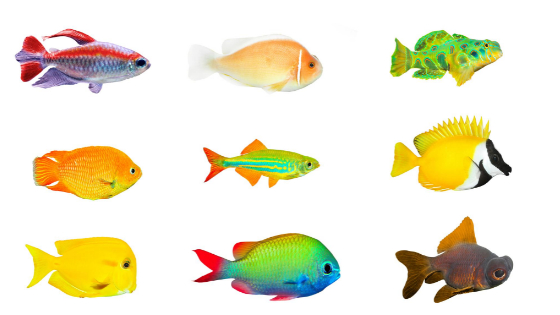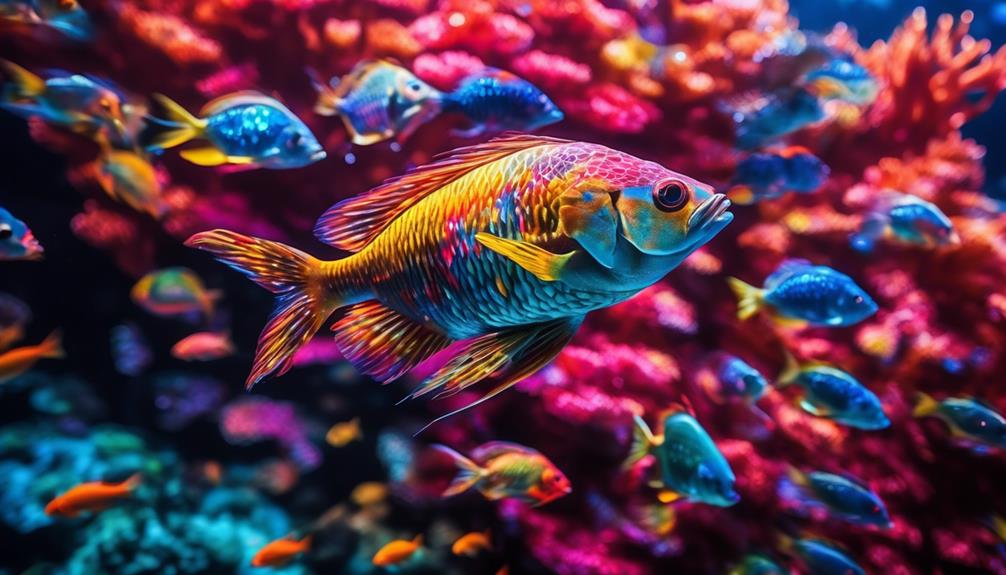
As you dip your toes into the vast ocean of knowledge, prepare to witness the kaleidoscope of colors that adorn the world of drum fish. These enchanting creatures, with their vibrant hues and intricate patterns, beckon you to uncover the mysteries that lie beneath the surface.
From their origins in diverse habitats to their unique feeding habits, there is much to explore and unravel. So, join us on this captivating journey as we dive deeper into the colorful world of drum fish, where surprises await at every turn.
Key Takeaways
- There are several species of drum fish, with the Black Drum and Red Drum being the main ones.
- Drum fish are large and can grow up to 90 pounds.
- They should not be kept with small fish that they might view as prey.
- Drum fish exhibit a wide range of colors and patterns, with some species being dull in coloration and others having bold markings.
The Variety of Drum Fish
Drum fish offer a vibrant array of colors and patterns, making them a visually captivating addition to any aquarium. With over 250 species to choose from, you can find drum fish that exhibit a wide range of stunning colorations.
While some drum species, like the Black Drum, may be dull in color with few markings, others, like the Spotted Drum, showcase bold and eye-catching patterns such as thick black and white bars. Whether you prefer subtle hues or striking contrasts, there’s a drum fish that will suit your aesthetic preferences.
These colorful fish will undoubtedly become the focal point of your aquarium, providing a visually stimulating and captivating environment for both you and your aquatic companions.
Black Drum and Red Drum Species
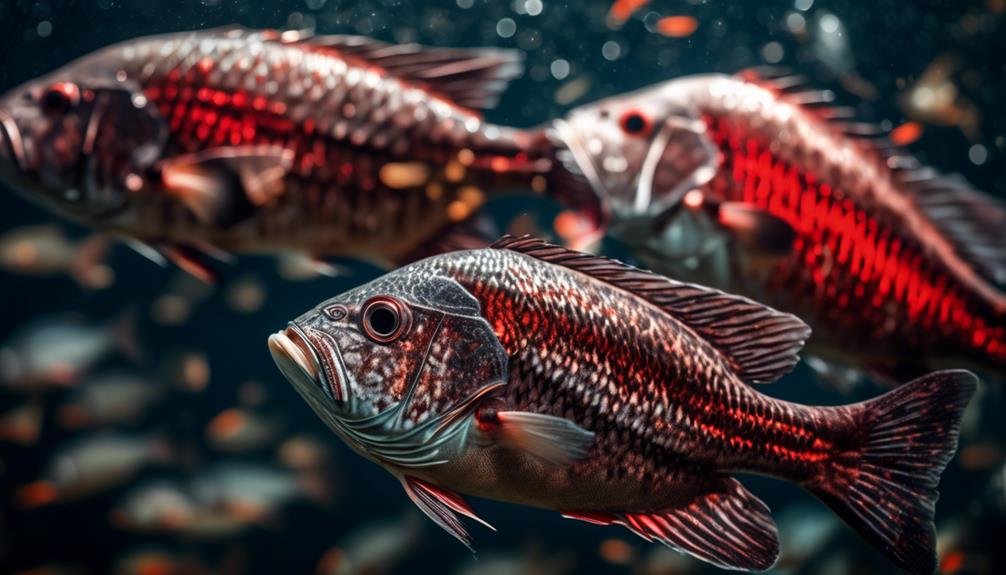
Are you curious about the distinctive features of the Black Drum and Red Drum species of fish?
The Black Drum, also known as Pogonias cromis, is a large fish that can grow up to 90 pounds. It has a dark gray or black body with a high arched back and a rounded tail.
On the other hand, the Red Drum, or Sciaenops ocellatus, is known for its reddish-bronze coloration and the characteristic black spot near its tail. It’s also a large fish and can reach weights of over 80 pounds.
Both species are carnivorous and prefer brackish to saltwater environments. They shouldn’t be kept with small fish that may be viewed as prey.
Now that you know more about the Black Drum and Red Drum, you can appreciate their unique features in the colorful world of drum fish.
Impressive Size and Weight
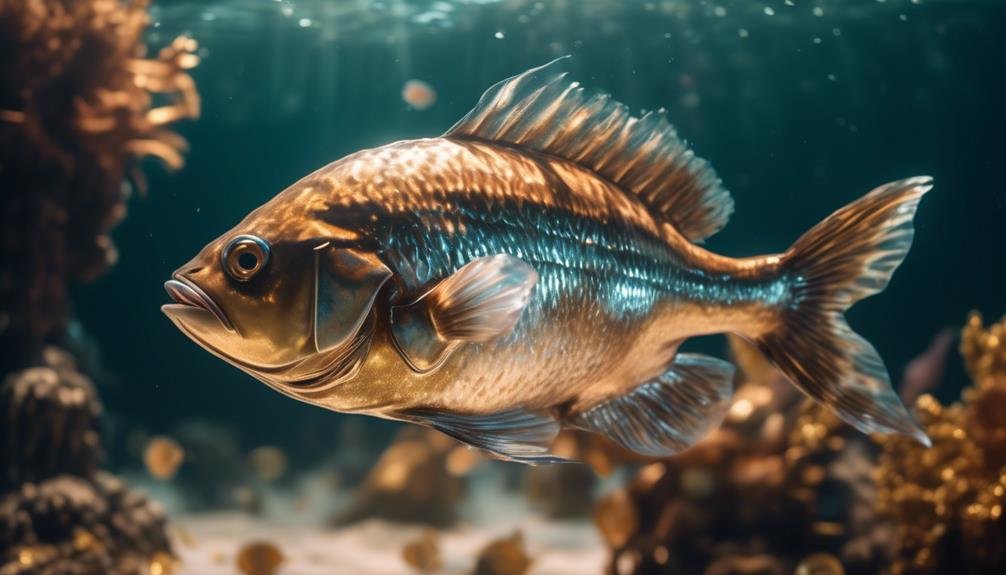
With some specimens growing upwards of 90 pounds, the drum fish truly lives up to its reputation for impressive size and weight. These fish can reach lengths of over 5 feet, making them one of the largest species in the ocean.
The sheer size and bulk of these fish is a sight to behold, and it’s no wonder they’re often sought after by anglers. In addition to their impressive size, drum fish are also known for their incredible strength and power. They’ve muscular bodies that allow them to swim swiftly and forcefully, making them a formidable opponent for any angler.
Whether you’re fishing for sport or simply observing these magnificent creatures in their natural habitat, their size and weight will leave you in awe.
Compatible Tank Mates
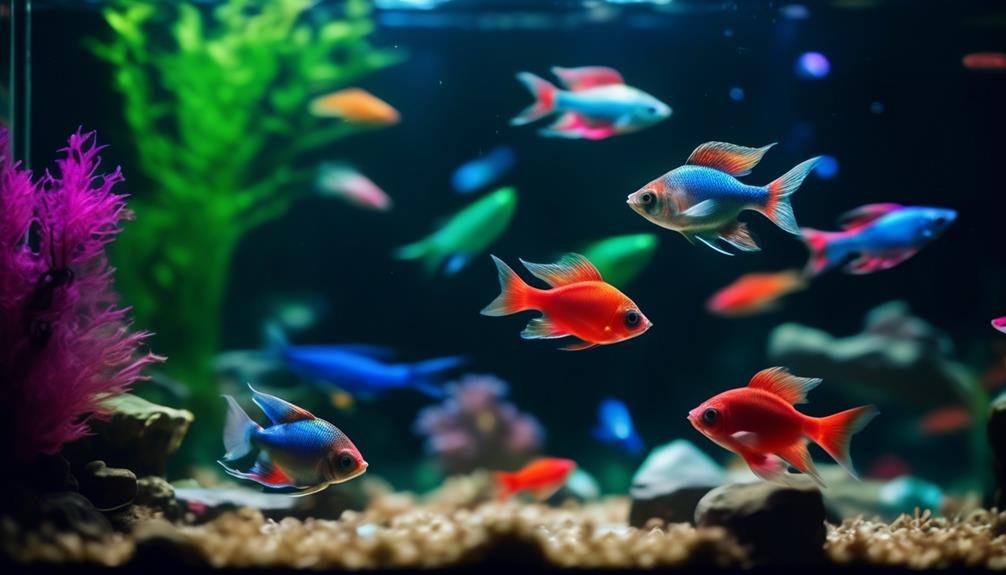
After witnessing the impressive size and strength of the drum fish, you may be wondering which species of fish can peacefully coexist with them in an aquarium. When it comes to tank mates for drum fish, it’s important to choose non-aggressive species of similar size.
Small fish that could become prey should be avoided. Since drum fish are carnivorous, they may view smaller fish as food. However, they can get along well with other non-aggressive species that are of similar size. This will help create a peaceful and harmonious environment in the aquarium.
When selecting tank mates for drum fish, be sure to consider their size and temperament to ensure compatibility and reduce the risk of aggression or predation.
Habitat and Origins
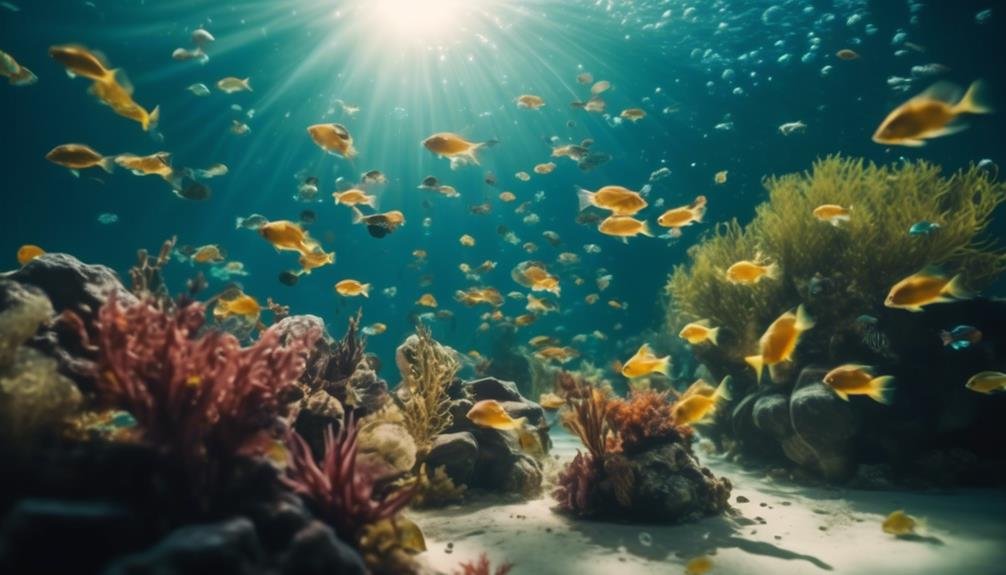
Drum fish originate from various brackish and saltwater environments, inhabiting the lower levels of the water column. They’re found in different areas, but they generally prefer brackish to saltwater habitats.
Here are three key points about the habitat and origins of drum fish:
- Drum fish species come from a wide range of areas, including estuaries, bays, and coastal waters.
- They’re known to inhabit muddy or sandy bottoms, as well as areas with submerged vegetation.
- Some species, like the Black Drum, are commonly found in brackish waters, while others, like the Red Drum, are more commonly found in saltwater environments.
Understanding the natural habitat and origins of drum fish is important for providing them with the appropriate tank conditions and ensuring their well-being in captivity.
Diverse Colorations and Patterns
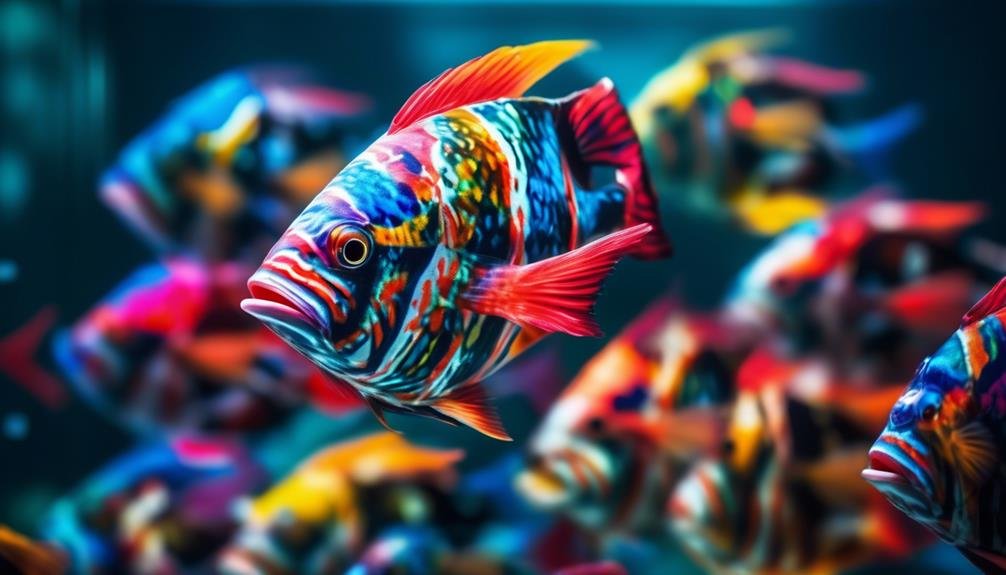
Many species of drum fish exhibit a wide range of vibrant colors and intricate patterns. These diverse colorations and patterns make them a visually stunning addition to any aquarium. Here are a few examples of the colorful world of drum fish:
| Species | Coloration | Pattern |
|---|---|---|
| Spotted Drum | Bold black and white bars | Vertical stripes |
| Red Drum | Coppery red with a black spot near the tail | Solid color with a spot |
| Black Drum | Dark gray or black | Solid color |
As you can see, each species has its own unique coloration and pattern, adding to the beauty and diversity of the drum fish family. Whether you prefer bold stripes or solid colors, there is a drum fish that will catch your eye. So, why not bring a splash of vibrant color into your aquarium with these stunning drum fish?
Individual Care Requirements
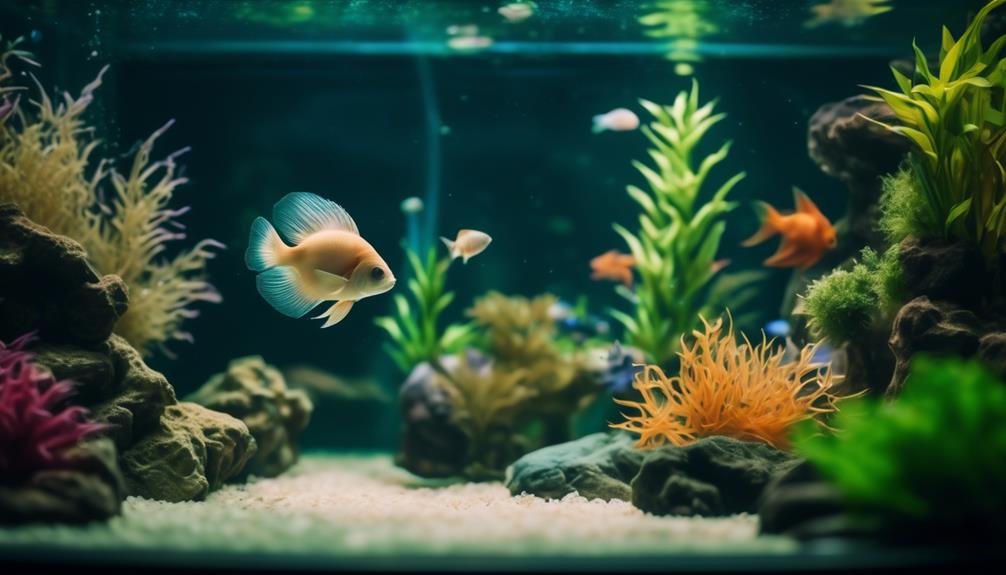
To properly care for drum fish in your aquarium, it’s important to understand their individual care requirements. Here are three key points to consider:
- Tank Environment: Provide a suitable tank environment based on the specific species of drum fish you have. For example, the Black Drum prefers brackish waters, while the Spotted Drum thrives in warm marine waters. Ensure the water temperature, hardness, and pH levels are appropriate for your fish.
- Tank Setup: Drums are benthic feeders, so they require plenty of open space along the bottom of the tank. Decorate sparsely with live rock to mimic their natural habitat.
- Feeding: Most drum fish are carnivorous, so offer a varied diet of meaty foods such as worms, shrimp, crustaceans, and small fish. Provide a wide variety of fresh and frozen foods, including mysis shrimp, brine shrimp, worms, and small fish.
Tank Setup and Maintenance
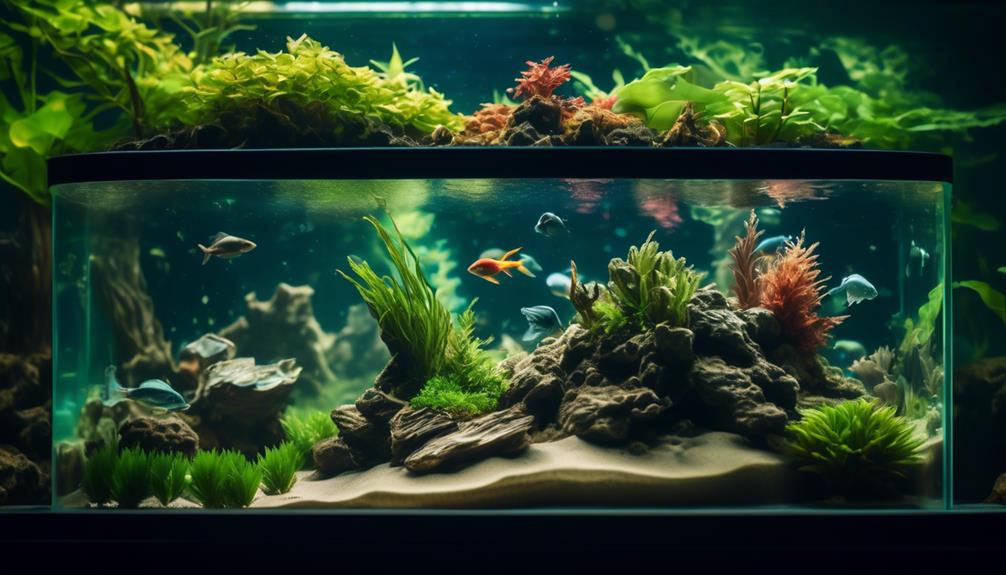
For proper care of your drum fish in the aquarium, it’s essential to establish an appropriate tank setup and maintenance routine. The specific requirements for your drum fish will vary depending on their species.
Some drums, like the Black Drum, prefer brackish waters, while others, like the Spotted Drum, require warm marine environments. Make sure to provide ample open space along the bottom of the tank, as most drums are benthic feeders. You can decorate sparsely with live rock to create hiding spots.
In terms of maintenance, regular water testing is crucial to ensure proper pH, hardness, and temperature levels. Additionally, maintain a regular feeding schedule with a variety of meaty foods like worms, shrimp, and small fish.
Benthic Feeding Habits
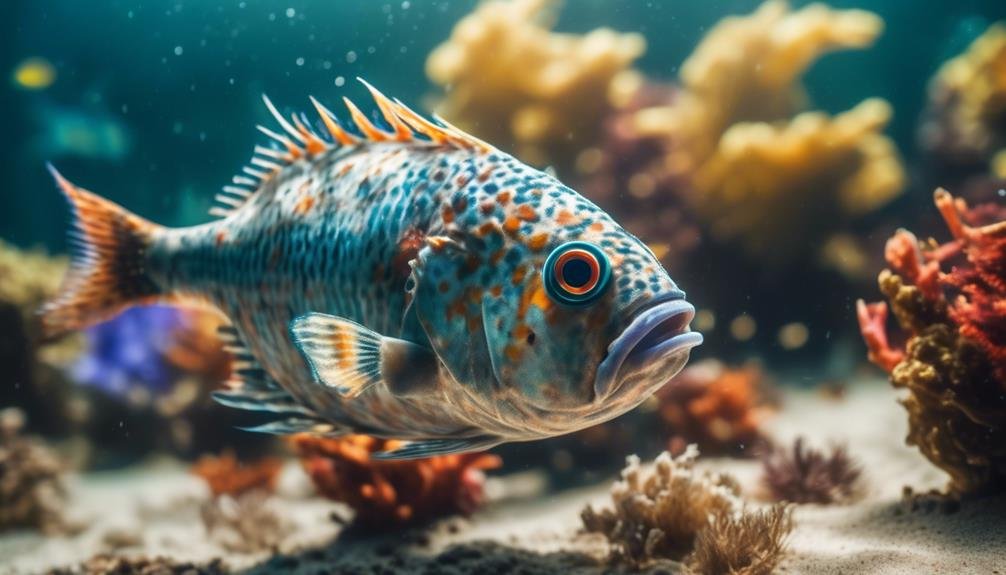
To properly care for your drum fish in the aquarium, understanding their benthic feeding habits is crucial. These fish are benthic feeders, meaning they primarily feed on prey found at the bottom of the tank. Here are three important points to keep in mind:
- Provide a diverse diet: Offer a variety of meaty foods such as worms, shrimp, crustaceans, and small fish. This will ensure that your drum fish receive all the necessary nutrients they need to thrive.
- Offer fresh and frozen foods: Along with live foods, make sure to include fresh and frozen options like mysis shrimp, brine shrimp, and worms. This will add variety to their diet and keep them interested in their food.
- Maintain a clean tank: Regularly clean the tank to remove any leftover food or waste that may accumulate at the bottom. This will help maintain water quality and prevent any potential health issues for your drum fish.
Nutritional Needs in Captivity
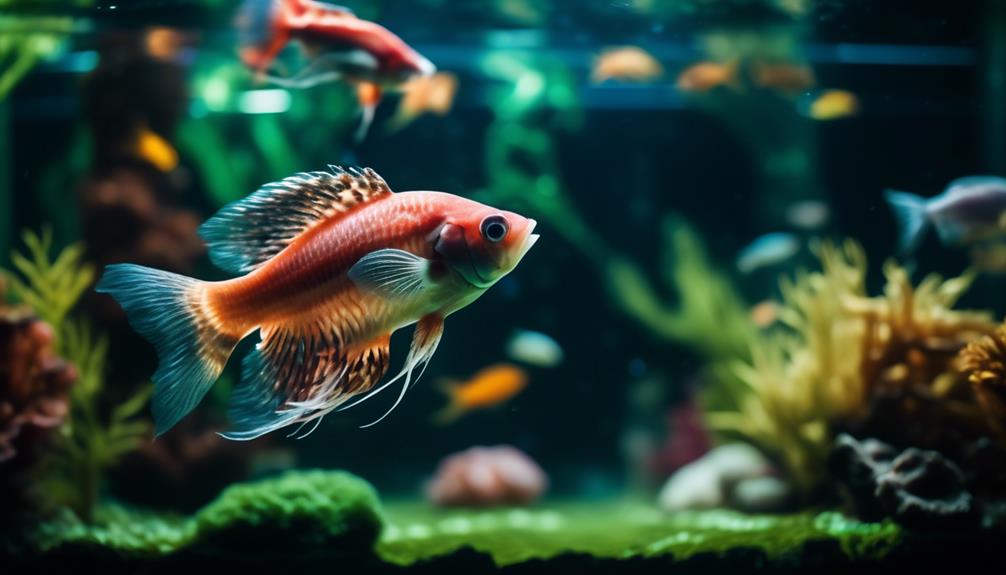
Understanding the nutritional needs of your drum fish in captivity is essential for their overall health and well-being. As carnivorous fish, drums require a diet consisting of a variety of meaty foods. In the home aquarium, it’s important to offer them a wide range of fresh and frozen options such as worms, shrimp, crustaceans, and small fish. Mysis shrimp, brine shrimp, and worms are also great choices.
Providing a diverse diet ensures that your drum fish receive the necessary nutrients for proper growth and development. It’s recommended to feed them multiple times a day in small portions, as this mimics their natural feeding habits. Monitoring their appetite and adjusting the feeding schedule accordingly is crucial to maintaining their health in captivity.
Breeding and Reproduction
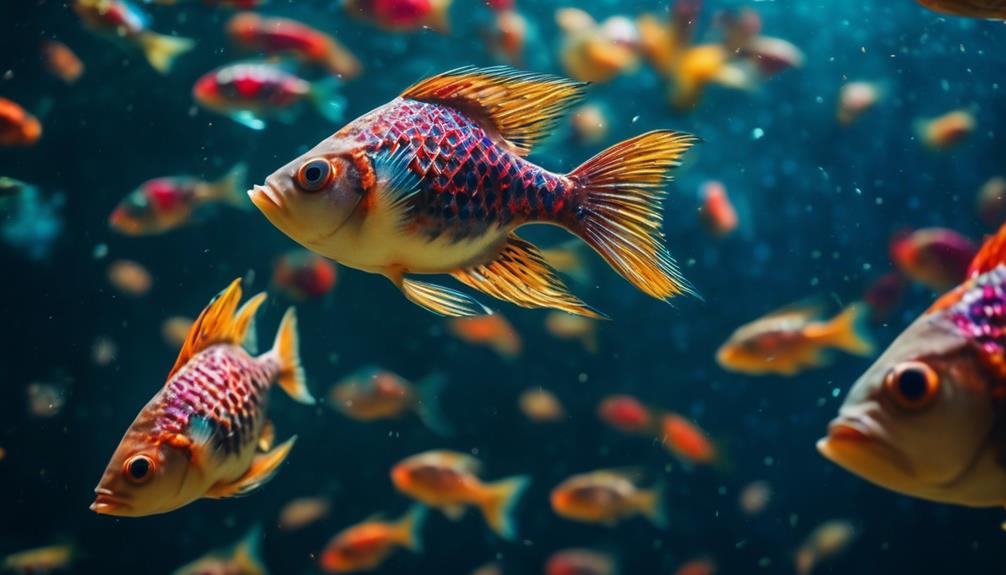
Now let’s explore the breeding and reproduction habits of drum fish, an important aspect to consider for those interested in keeping these vibrant creatures in their aquariums.
- Drum fish are known to reproduce through external fertilization, where the female releases her eggs into the water and the male fertilizes them with his sperm.
- They aren’t known to be prolific breeders, with females typically producing only a few thousand eggs at a time.
- The eggs are buoyant and float in the water column until they hatch into larvae, which then go through a series of developmental stages before becoming juvenile drum fish.
Understanding the breeding and reproduction habits of drum fish is crucial for successfully maintaining them in an aquarium. By providing the appropriate conditions and understanding their reproductive behaviors, you can help ensure the continued health and well-being of these colorful creatures.
Tips for Drum Fish Enthusiasts
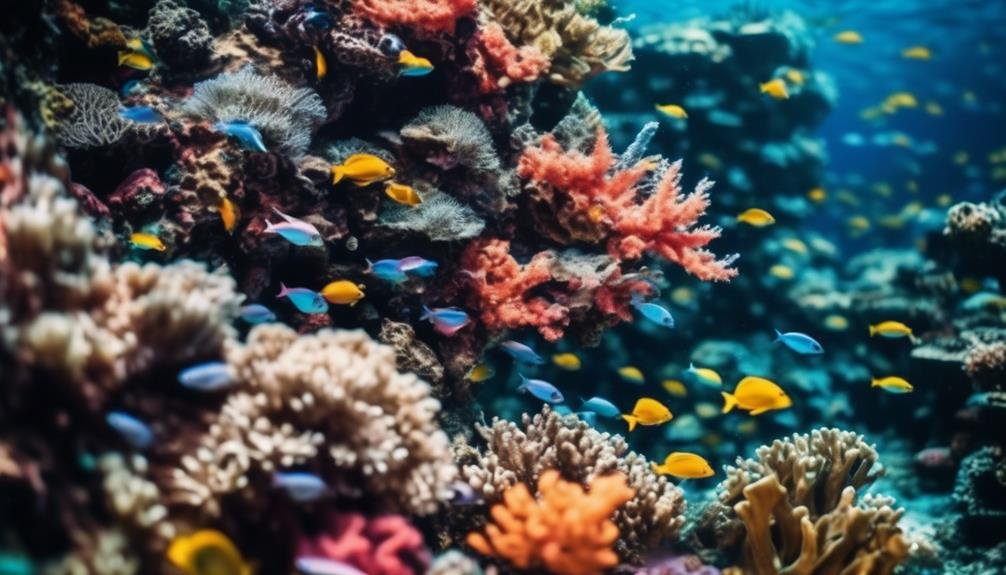
For drum fish enthusiasts, here are some valuable tips to enhance your experience with these vibrant creatures.
- When it comes to tank mates, choose non-aggressive species of similar size and avoid small fish that might become prey.
- Each species of drum fish has different aquarium requirements, so make sure to research their specific needs. For example, the Black Drum prefers brackish waters while the Spotted Drum thrives in warm marine environments.
- Keep the water temperature between 72F to 78F, with moderate hardness and a slightly alkaline pH.
- Drums are carnivorous, so offer them a varied diet of meaty foods like worms, shrimp, crustaceans, and small fish.
- Lastly, provide plenty of open space along the bottom of the tank and decorate sparsely with live rock.
Enjoy the colorful world of drum fish!
Frequently Asked Questions
What Are Some Common Diseases That Affect Drum Fish in Aquariums?
Some common diseases that affect drum fish in aquariums include bacterial infections, parasitic infestations, and fungal infections. It is important to maintain good water quality, provide a balanced diet, and quarantine new fish to prevent the spread of diseases.
Can Drum Fish Be Kept in a Freshwater Aquarium?
No, drum fish cannot be kept in a freshwater aquarium. They generally inhabit brackish to saltwater environments and have specific water requirements. It is important to provide the appropriate environment for their health and well-being.
How Long Do Drum Fish Typically Live in Captivity?
Drum fish typically live for several years in captivity, depending on the species and the care they receive. Providing a suitable environment, proper nutrition, and regular maintenance can help ensure their longevity.
Are There Any Specific Water Parameters That Drum Fish Require?
There are specific water parameters that drum fish require. For example, the Black Drum prefers brackish water while the Spotted Drum needs warm water with moderate hardness and a slightly alkaline pH.
Are Drum Fish Aggressive Towards Other Fish Species?
Drum fish are generally non-aggressive towards other fish species, as long as they are of similar size and non-prey. They can coexist peacefully with non-aggressive species in a properly sized aquarium.
– What Makes Drum Fish Colorful Compared to Koi Fish?
Drum fish and koi fish both inhabit the colorful world of freshwater aquatic life. The distinctiveness of drum fish lies in its iridescent hues, while the koi fish is known for its vibrant patterns and color combinations. Both species bring a burst of color to any aquatic environment.
Conclusion
So, whether you’re a seasoned aquarist or a beginner, the world of drum fish offers a captivating and vibrant experience.
With over 250 species to discover, each with their own unique beauty, there’s something for everyone to appreciate.
From their origins and habitats to their dietary needs and breeding habits, drum fish are truly fascinating creatures.
So dive in and explore this mesmerizing world, and create the perfect habitat for these colorful fish in your own aquarium.




